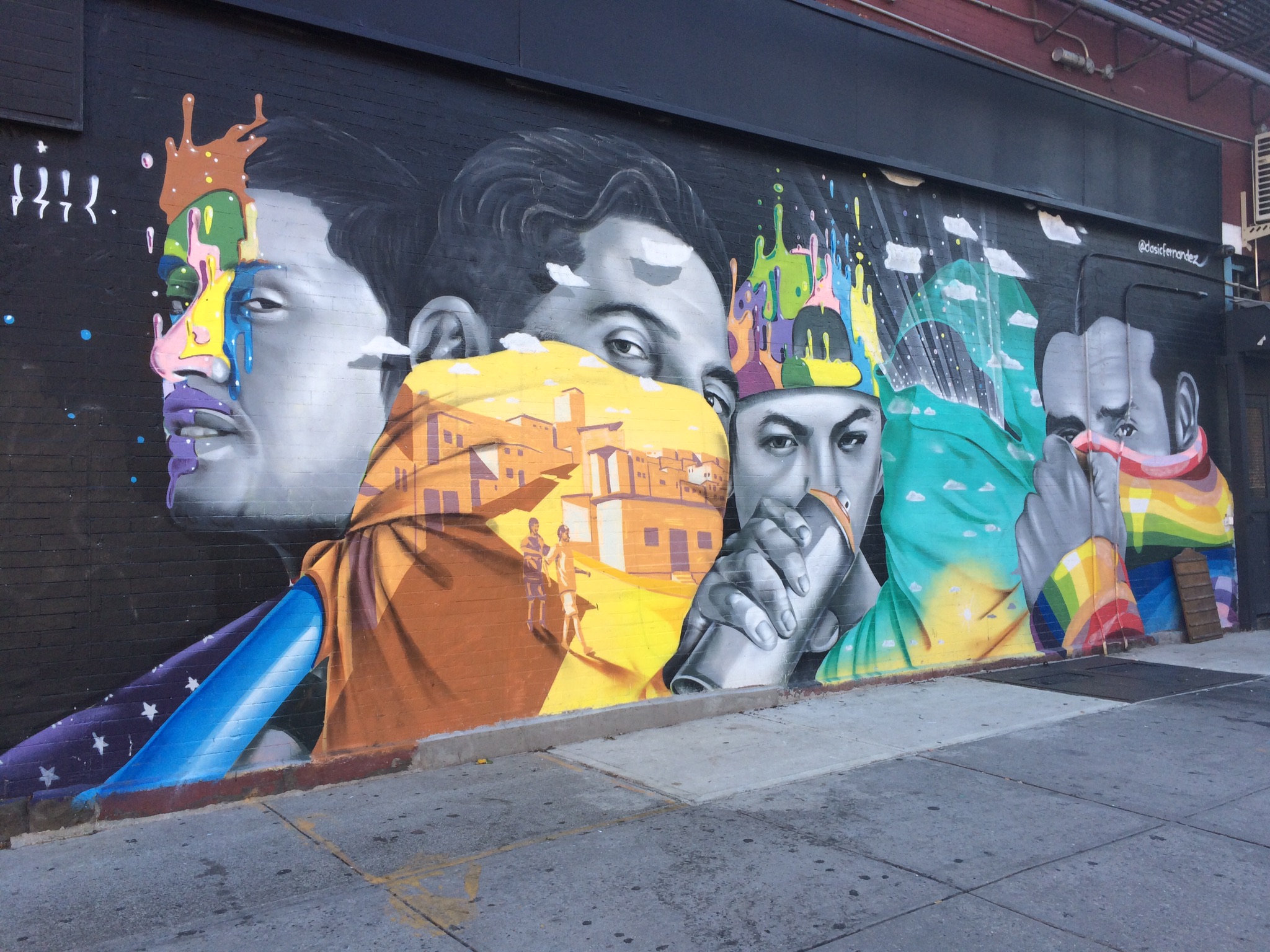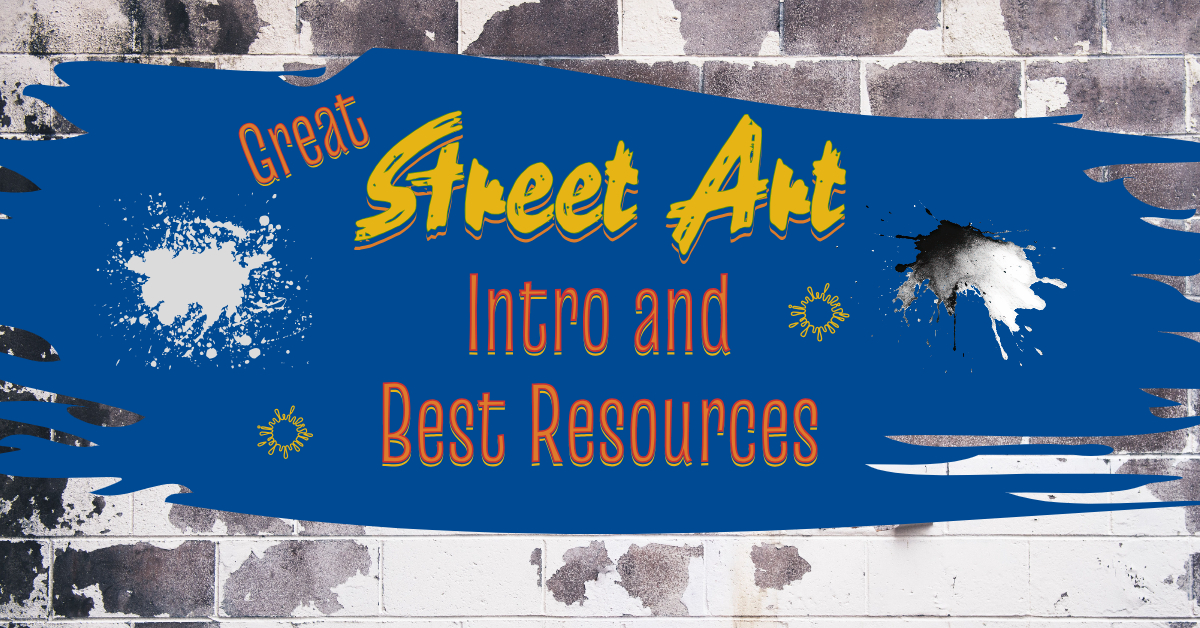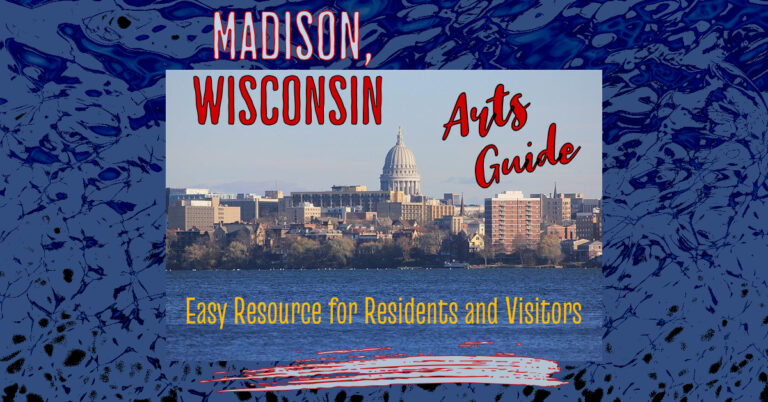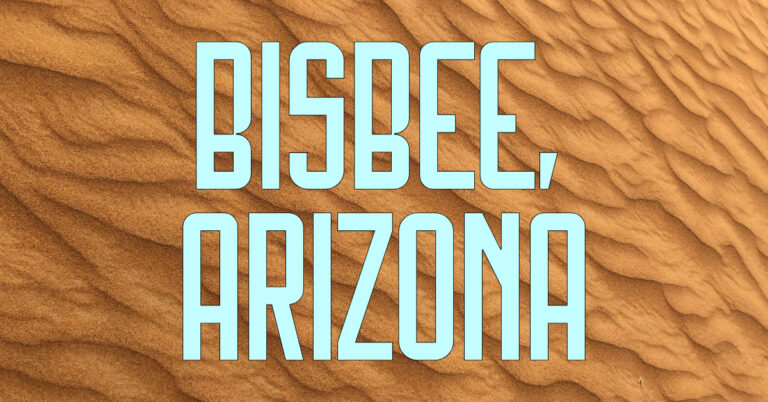Great Street Art Intro and Best Resources
This post is a quick reference street art resource for people who want to understand and experience street art, whether by viewing art, making art, or learning online. Enjoy this great street art intro and best resources post.
What are different types of street art? Where are the best murals? How can I become involved?
Please continue if you are looking for the answers to these questions, and thanks for visiting artfulnotebook.
Introduction to Street Art
Street art is all over the world and is not new. The human impulse to paint walls goes back to cave painting. More recently, street art has become widely promoted as a way to beautify public places. People are recognizing the vibrancy and community enhancement that mural projects and public art create. There is a great opportunity for neighbors and community members to engage with each other, collaborate to make art, and improve the place where they live. Checking out the street art resource on this post is a good start.

Find Street Art Photos
If you are looking for excellent street art photos, please check out the links below. The sites linked below are organized and comprehensive. Check them out if you are looking for photos by location or artists. You are only a few clicks away.
What Are Different Types of Street Art?
In brief, street art is visual art created in public spaces for public visibility. It can take various forms from paint on a flat wall to a sculpture, to a public performance. Here’s a list of common terms:
- Graffiti was an early form of art made in a street setting, often created illegally. Think of written words tagged on trains or bridges, for example. Graffiti is often meant to represent a group or community in a covert way, but it is in plain sight.
- Street art usually includes images, illustrations, or symbols that are meant to convey a message. Street art tends to be understandable to all who view the art.
- Guerilla art is created on a street or public setting without permission. Guerilla art tends to challenge its environment. Creating guerilla art tends to be an intentionally uncompliant act
Where Are The Best Murals and Street Art?
Fantastic street art thrives in the world’s global cities, which buzz with creative energy, large populations, artists and art supporters. Some smaller cities have outstanding public programs to beautify the urban landscape. A few cities that are well known for street art include: Berlin, Buenos Aires, London, Melbourne, Paris, New York City, San Francisco, Los Angeles, and Philadelphia.
Do you want to find other top-notch artists and locations? The websites below are excellent, comprehensive, organized street art resources. Check them out.
- ISSA – I Support Street Art – I Support Street Art is a non commercial website designed to inform and support street art from all over the world.
- Street Art Bio | Street Artist Biographies – StreetArtBio’s mission is to be the most valuable resource around for the Street Art community and its fans.
- Global Street Art | Painted Cities | Murals – Global Street Art identifies itself as the World’s leading multi-channel street art platform.
How To Get Involved
As discussed above, some people participate in street art by creating art without permission. However, there are many opportunities to reach out to an established public arts program. Ask to participate as a community artist. Offer to make a donation, or volunteer time. An excellent example of a public arts program, Mural Arts Philadelphia serves as a model for what can be accomplished. There are many other similar programs in cities and towns across the world.
Go to a Street Art, Graffiti, Mural Festival
Many street art festivals are large gatherings where artists are invited or apply, and then create murals or other forms of art during the festival. There are likely to be other activities such as music performances. When the festival is over, the urban landscape is enhanced with new art.
- Europe’s largest Street Art & Graffiti festival | Upfest – Takes place in Bristol, UK
- Festival Mural – Festival d’Art Urbain – Takes place in Montreal, Canada
- Wonderwalls Festival – Takes place in Australia
Famous Street Artists and Muralists
- Jean-Michel Basquiat first achieved fame as part of the graffiti duo SAMO, alongside Al Diaz, when he created street art in of Manhattan’s Lower East Side in the late 1970.
- Keith Haring was an American artist whose pop art emerged from the New York City graffiti subculture of the 1980s. New Yorkers discovered his work when Haring energetically started creating drawings in white chalk on blank paper panels throughout the New York subway system.
- Diego Rivera, a prominent Mexican painter, painted large frescoes and helped establish the mural movement in Mexican and international art. Somewhat early in his career, Rivera was involved in a government sponsored Mexican mural program.
- Banksy is an England-based street artist, political activist. Banksy’s real name and identity remain unconfirmed. Banksy creates satirical and subversive street art, often using a distinctive stenciling technique. Banksy’s work grew out of the Bristol underground scene.
Personal Notes on Street Art
There are several aspects of street art that I find appealing. One is that street art is tangible and accessible. Most people can find a way to contribute, whether they take it into their own hands or volunteer with an organization. On a local level, art creators can see and feel the impact made in their own community. Also, people who run arts organizations can involve people, including local youth, and provide a meaningful experience.
It’s also neat that public space can be a canvas. An otherwise unexciting wall (or street crosswalk, etc.) can become a vibrant, colorful, thought-provoking piece of art. Street art is intertwined with placemaking, an exciting approach to the planning, design and management of public spaces.
Some years ago, I volunteered to help paint a few murals in my community. I enjoyed contributing to the group effort. It was not a perfect fit, as I like a bit more of an independent approach, but I’m glad I did it. And I’m pleased so see the increase in street art in my town and beyond.
I hope you have found this artfulnotebook post to be a helpful street art resource.
Published January 21, 2023


